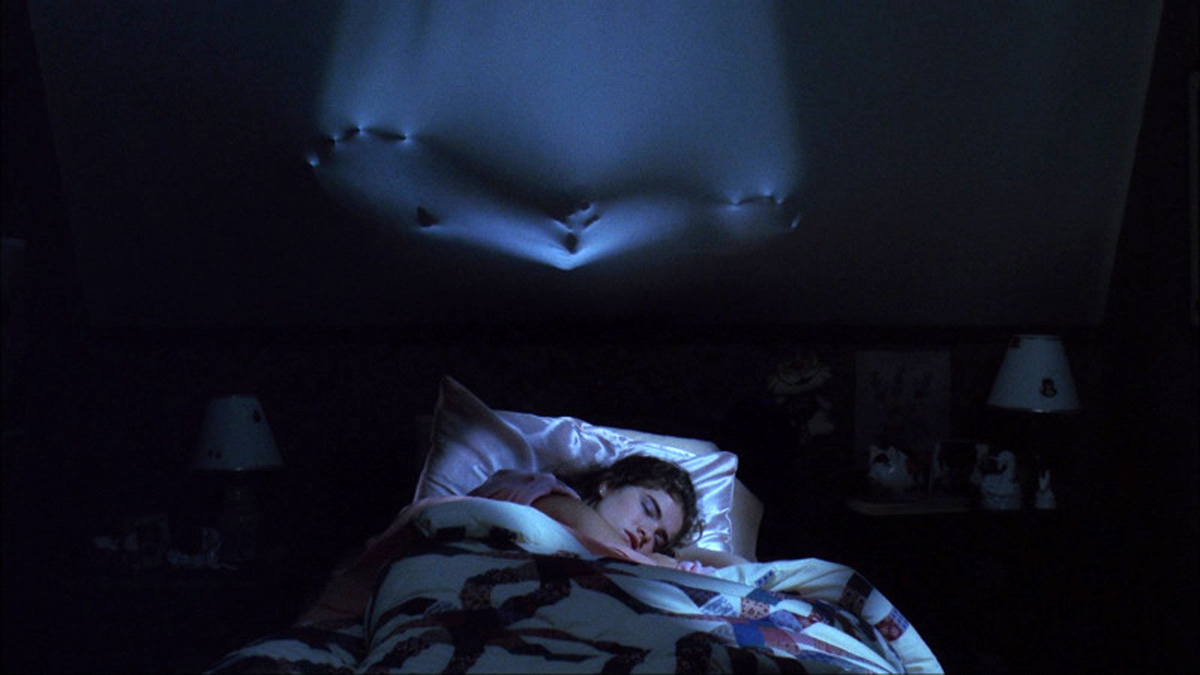
It will never cease to amaze me that A NIGHTMARE ON ELM STREET was one of the most obvious, sellable, perfect ideas for a horror film, and nobody believed in it, everyone tried to convince Wes Craven that it was a terrible idea—just in terms of its premise—until he took it to Bob Shaye and New Line Cinema. After that, well, there’s a reason they call New Line “the house that Freddy built.”
We know the story. Tina, Nancy, Rod and Glen, they’ve all been having nightmares. The same nightmares about a man in a red and green striped sweater with a horrible, dead, burned face and hand-crafted glove tipped with long, sharp knives. Freddy Krueger is a perfect boogeyman for the ‘80s, full of horrid glee, fun to watch, a showman, but genuinely terrifying in that first movie. He takes such delight in tormenting these kids. As imaginative and unbound as the series got creatively after this, I love how subtle the dream sequences are in the original, so you never really know for sure whether we’re in a dream or in reality. The deaths are also treated with a perfect, unpleasant realism even in impossible circumstances. Tina’s death is one of the most memorable and horrific in the genre’s history. She’s dragged up the wall and onto the ceiling, which is pure fantasy, well beyond reality, and the death itself is presented as realistically as possible. She’s wheezing, gasping for air with her lungs cut open until she simply flops limply onto the bed.
This is obviously one that a great deal of people even casually interested in horror have seen. But it is one of my top five favorite horror films, maybe even top five movies, period. It's one of the most teenager-friendly movies ever made because the core of the story is independence. Your parents do not inherently know better, they are not by any means morally superior, everyone telling you what you're supposed to be and how you're supposed to be reacting to something is only making things worse and you have to listen to yourself. But what I really want to talk about is that moment of Freddy’s face pushing through the wall, looming over Nancy’s bed while she sleeps obliviously.
This is my favorite single shot from a horror movie, possibly any movie in general, because it sums up the whole concept in one image. There is a monster looming over you while you sleep and are at your most vulnerable. It's such a cheap effect too, it's just a spandex wall and a face pushing in from the other side, and yet the effect is terrifying. That sums up the film as a whole. It looks and feels so much more expensive than it actually is. One of at least three times Wes Craven revolutionized the genre, but perhaps THE most seminal revolution out of all of them. A flat-out masterpiece.